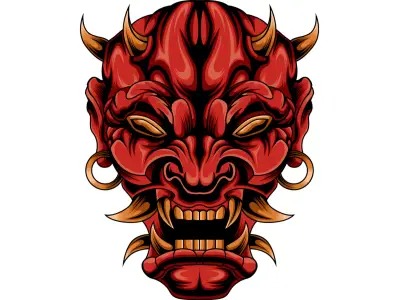Roman mythology offers a fascinating glimpse into the beliefs and stories that shaped ancient Rome. In this blog post, we'll introduce you to 12 of the most important Roman gods, explaining their roles and significance in ancient times.
Jump to:
- The Role of Roman Gods in Society
- Jupiter: The King of the Gods
- Juno: The Queen of the Gods
- Neptune: The God of the Sea
- Mars: The God of War
- Venus: The Goddess of Love and Beauty
- Minerva: The Goddess of Wisdom
- Apollo: The God of the Sun and Music
- Diana: The Goddess of the Hunt
- Vulcan: The God of Fire
- Vesta: The Goddess of the Hearth
- Mercury: The Messenger of the Gods
- Ceres: The Goddess of Agriculture
- Roman Mythology and Its Legacy
- Frequently Asked Questions About Roman Gods
The Role of Roman Gods in Society
Roman gods played a central role in the daily lives of ancient Romans. They were believed to influence every aspect of life, from household affairs to state matters. Temples, altars, and statues dedicated to these gods were common throughout Rome, and numerous festivals celebrated their divine powers and ensured their favour.
Recommended for you!
Best Sellers1. Jupiter: The King of the Gods
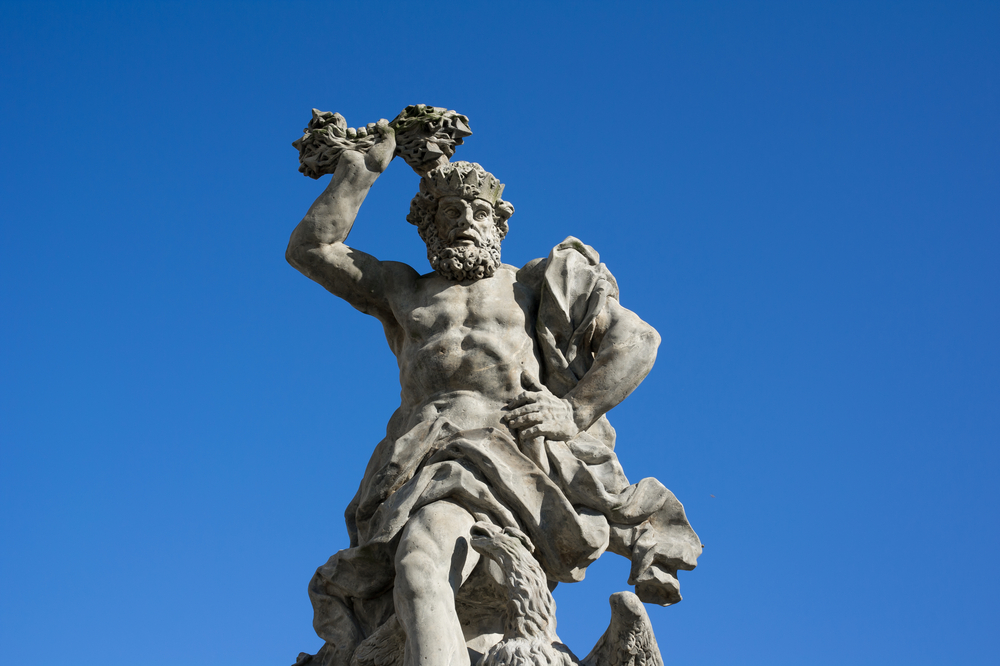
Powers
Jupiter, also known as Jove, holds the highest position among the Roman gods. As the god of the sky, he rules over the heavens and is the deity of thunder and lightning. His dominion extends to maintaining order and justice, making him the protector of the state and its laws. Jupiter's power was seen as essential for ensuring the stability and prosperity of Rome.
Symbol
Jupiter is often depicted holding a thunderbolt, a powerful symbol of his ability to control the weather and enforce his will. His sacred animal, the eagle, represents his dominion over the skies and is a recurring motif in Roman iconography. The eagle, being a symbol of strength and courage, played a significant role in Roman rituals and was considered a sacred creature.
Worship and Influence
Jupiter was worshipped at the grand Temple of Jupiter Optimus Maximus on the Capitoline Hill, which was a central site for Roman religious life. Festivals and ceremonies dedicated to Jupiter, such as the Ludi Romani, highlighted his importance in maintaining the favour of the gods for the prosperity and protection of Rome.
2. Juno: The Queen of the Gods
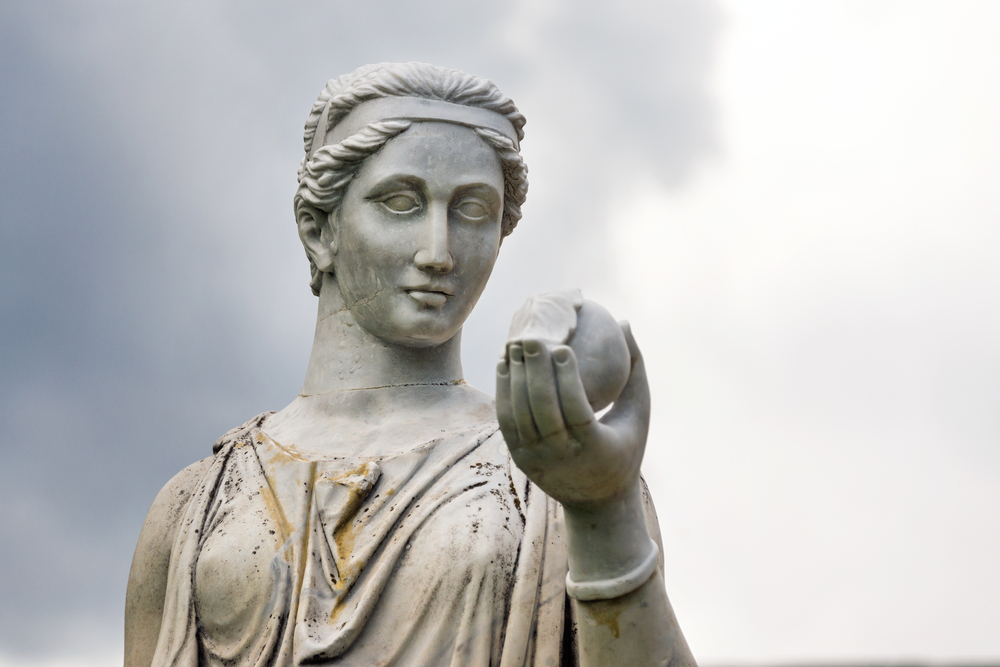
Powers
Juno is the queen of the gods and the wife of Jupiter. As the goddess of marriage and childbirth, she plays an important role in the lives of women, overseeing their well-being and ensuring successful marriages and healthy childbirths. Juno's influence extends to all aspects of family and social order, making her a vital deity in Roman religion.
Symbol
Juno is often depicted with a peacock, her sacred animal, which symbolises her beauty and regal status. The peacock, with its stunning plumage, represents Juno's connection to the heavens and her role as a celestial queen. Juno is also associated with the pomegranate, a symbol of fertility and abundance.
Worship and Influence
Juno was honoured in various festivals, including the Matronalia, which celebrated motherhood and fertility. Her main temple, the Temple of Juno Moneta, served as a religious site and housed the Roman mint. Juno's worship highlights the importance of marriage and family as foundations of Roman society.
3. Neptune: The God of the Sea
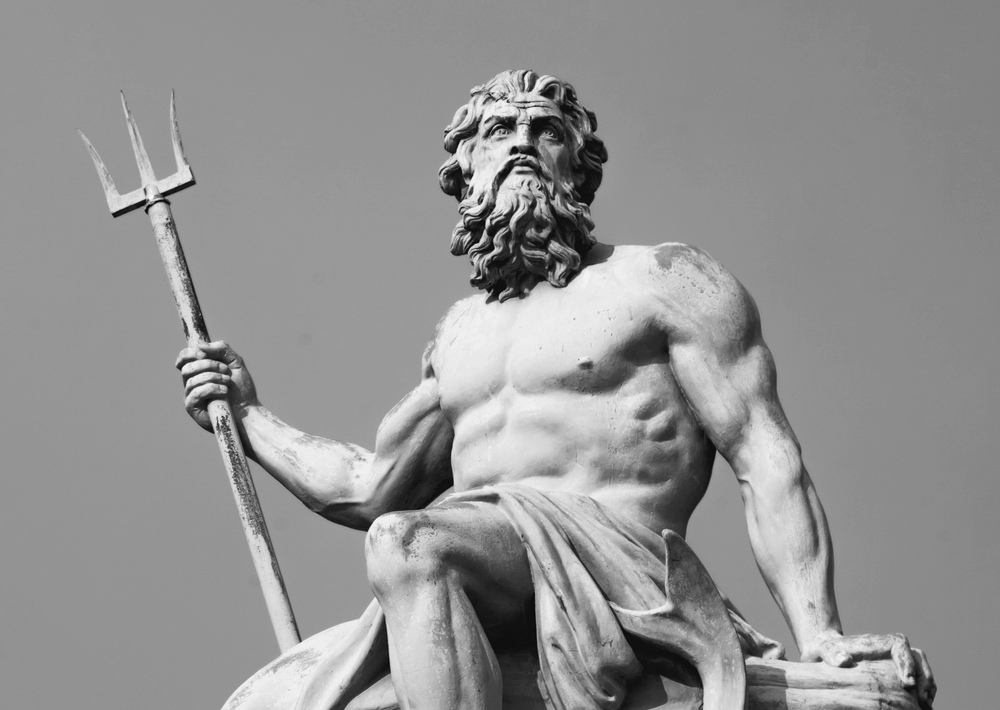
Powers
Neptune is the Roman god of the sea, similar to the Greek god Poseidon. He governs all bodies of water, including oceans, rivers, and springs. Neptune's powers encompass the ability to calm the seas or create devastating storms, making him an important deity for sailors and fishermen who relied on his favour for safe voyages and bountiful catches.
Symbol
Neptune is typically depicted with a trident, a three-pronged spear that symbolises his authority over the waters. This powerful weapon highlights his control over the sea and its creatures. Neptune is also associated with horses, particularly the hippocampus, mythical creatures that are half horse and half fish, symbolising his dominion over both land and sea.
Worship and Influence
Neptune was honoured in the Neptunalia festival, held in mid-summer, which included games and feasts near bodies of water. Romans built altars and offered sacrifices to Neptune to ensure his protection and favour. His importance in Roman religion reflects the role of the sea in trade, travel, and military endeavours.
4. Mars: The God of War
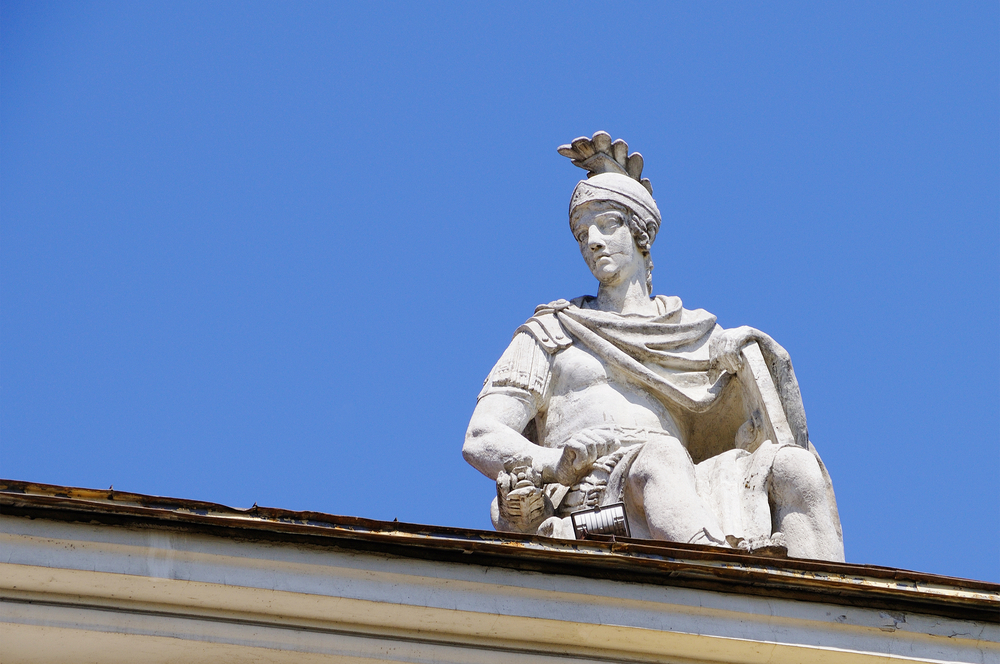
Powers
Mars is the Roman god of war, known for his prowess and strength in battle. Unlike his Greek counterpart Ares, who was often seen as chaotic, Mars was also associated with agriculture and fertility. This dual role made him a father figure to the Roman people, symbolising both the protection of the state and the nurturing of the land.
Symbol
Mars is often depicted in full battle armour, including a helmet, shield, and spear, representing his martial nature and readiness for combat. His sacred animals, the wolf and the woodpecker, symbolise his strength, courage, and the fierce protection he offers to his followers. The wolf, in particular, is linked to the legend of Romulus and Remus, the founders of Rome.
Worship and Influence
Mars was honoured in numerous festivals, such as the Martius, held in March, which marked the beginning of the military campaign season. The Campus Martius (Field of Mars) in Rome was a central site for military training and gatherings. Mars' worship was integral to Rome's identity as a warrior society, emphasising discipline, strength, and the readiness to defend and expand the empire.
5. Venus: The Goddess of Love and Beauty
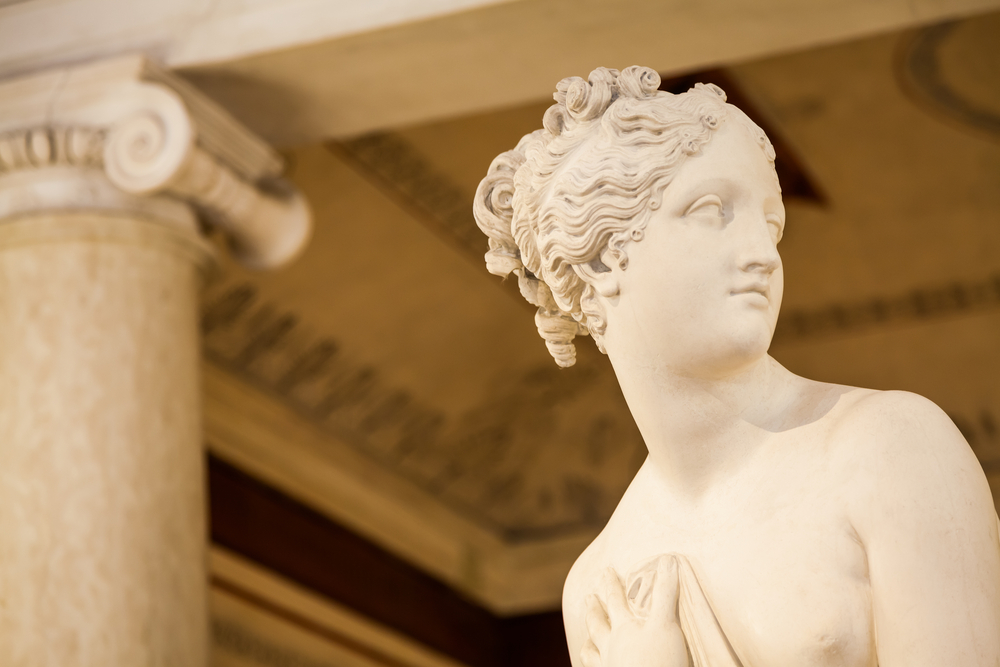
Powers
Venus is the Roman goddess of love, beauty, and fertility, akin to the Greek goddess Aphrodite. She embodies both physical attraction and spiritual love, playing a role in myths that celebrate romance, passion, and procreation. Venus's influence extends to the natural world, where she promotes growth and fertility.
Symbol
Venus is often depicted emerging from the sea on a shell, symbolising her birth and connection to water, which is seen as a source of life and renewal. Her other symbols include the rose, representing beauty and love, and the dove, symbolising peace and harmony. These symbols reflect her nurturing and compassionate nature.
Worship and Influence
Venus was highly celebrated in Roman society, with numerous temples and festivals dedicated to her honour. The Veneralia, celebrated on April 1st, was a festival in her honour, focusing on love and beauty. Venus played a key role in Roman art and literature, symbolising the ideal of beauty and the power of love to transform and inspire.
6. Minerva: The Goddess of Wisdom
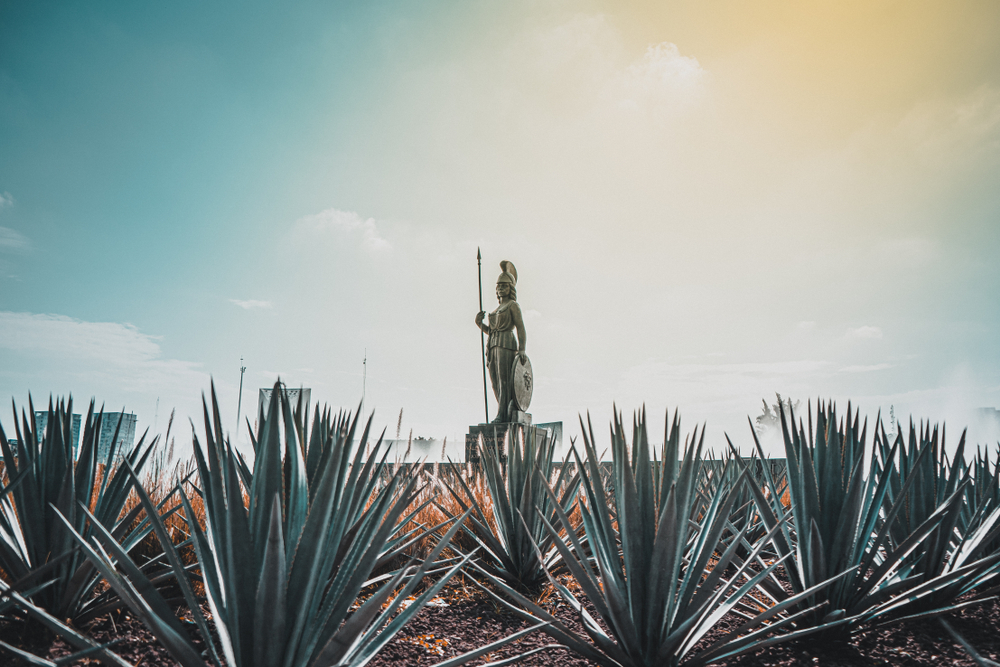
Powers
Minerva is the Roman goddess of wisdom, arts, crafts, and strategic warfare, similar to the Greek goddess Athena. She represents intellect, creativity, and tactical skills, making her a patroness of scholars, artists, and warriors. Minerva's wisdom encompasses both practical knowledge and philosophical understanding.
Symbol
Minerva is often depicted with an owl, a symbol of wisdom and watchfulness. The owl signifies her ability to see what others cannot and her connection to the night, a time for deep thought and reflection. Minerva is also frequently shown with a shield and spear, highlighting her role in strategic warfare and defence.
Worship and Influence
Minerva was honoured in the Quinquatria festival, which took place over five days in March. This festival celebrated her contributions to society, particularly in education and the arts. The Temple of Minerva on the Aventine Hill in Rome was a central place of worship, where various guilds and educational institutions sought her guidance and protection.
7. Apollo: The God of the Sun and Music
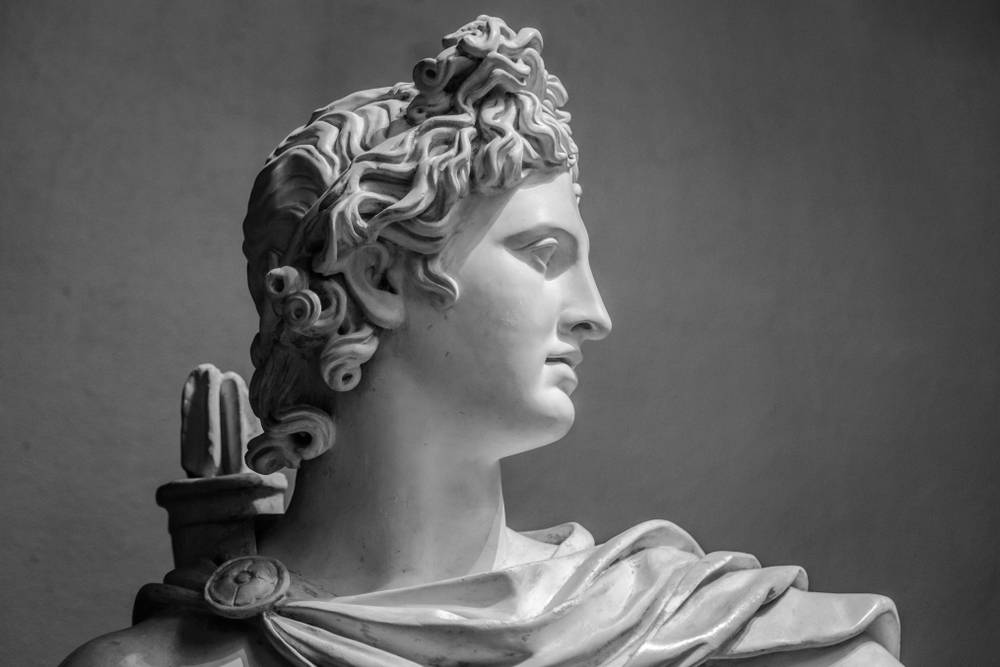
Powers
Apollo, one of the few gods with the same name in both Roman and Greek mythology, is the god of the sun, music, poetry, and prophecy. He brings light and clarity to the world, illuminating both the physical and the intellectual. Apollo's powers also include healing and truth, making him a versatile and revered deity.
Symbol
Apollo is often depicted with a lyre, symbolising his mastery of music and the arts. The lyre represents harmony and creativity, reflecting Apollo's role as a patron of the muses. Additionally, he is associated with the laurel wreath, symbolising victory and honour, and the sun, representing his dominion over light and life.
Worship and Influence
Apollo was worshipped at the Temple of Apollo in Rome, where oracles delivered his prophecies. His influence extended to many aspects of Roman culture, including medicine, poetry, and athletics. Festivals such as the Ludi Apollinares celebrated Apollo's contributions, emphasising the importance of art, music, and intellectual pursuits in Roman life.
8. Diana: The Goddess of the Hunt
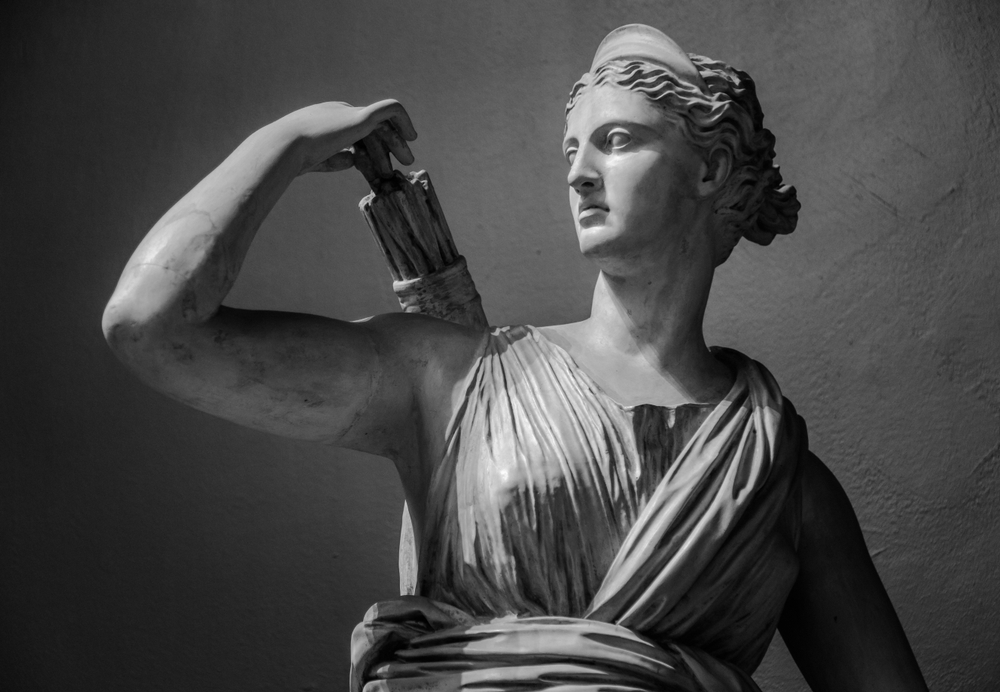
Powers
Diana is the Roman goddess of the hunt, the moon, and nature, equivalent to the Greek goddess Artemis. She is a protector of women and children, overseeing childbirth and ensuring their safety. Diana's powers include control over the wilderness and the animals within it, making her a guardian of natural harmony.
Symbol
Diana is often depicted with a bow and arrow, symbolising her prowess as a huntress and her role in maintaining balance in nature. She is frequently accompanied by a deer or hunting dogs, reflecting her connection to wildlife. The moon, another of her symbols, represents her influence over the night and her role as a guardian of the natural cycles.
Worship and Influence
Diana was celebrated during the festival of Nemoralia, also known as the Festival of Torches, held in August. This festival honoured her as a nurturing and protective deity, where worshippers would carry torches and offer prayers in her name. The Temple of Diana at Lake Nemi was a significant centre of worship, where people sought her favour for hunting, childbirth, and protection.
9. Vulcan: The God of Fire
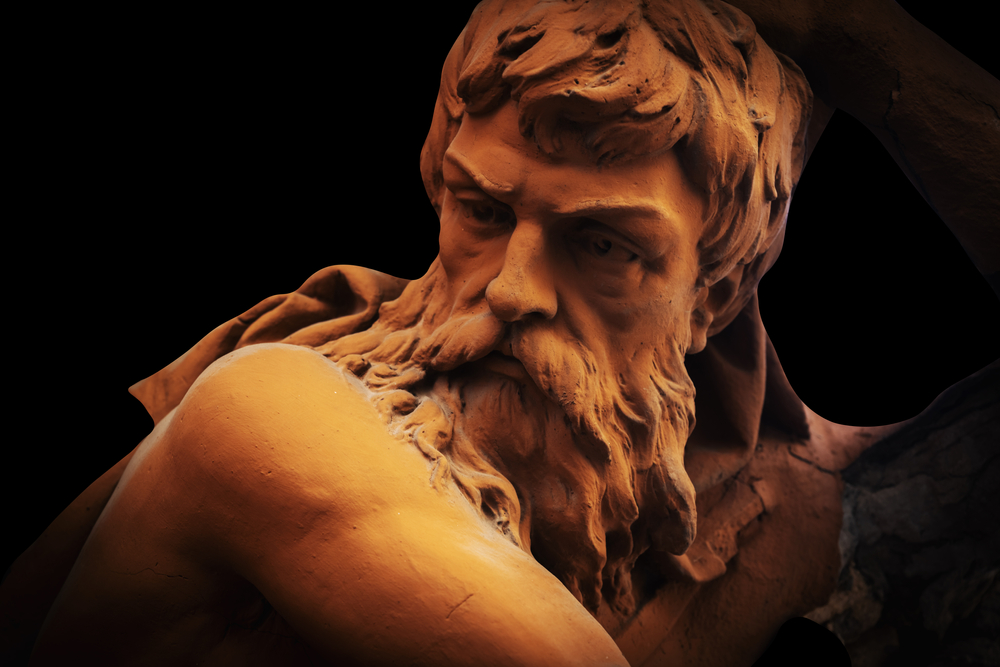
Powers
Vulcan is the Roman god of fire, metalworking, and craftsmanship, similar to the Greek god Hephaestus. He embodies both the destructive and creative aspects of fire. Vulcan's domain includes forging weapons and tools, showcasing his skill as a blacksmith and craftsman. His control over fire extends to its beneficial uses in industry and its destructive potential in natural disasters.
Symbol
Vulcan is often depicted with a hammer and anvil, tools that symbolise his role as the divine blacksmith. These symbols represent his craftsmanship and ability to create powerful weapons and intricate objects. Vulcan is also associated with the forge, a place where raw materials are transformed into valuable items through the intense heat of fire.
Worship and Influence
The festival of Vulcanalia, held on August 23rd, honoured Vulcan. During this festival, bonfires were lit to ward off destructive fires and to seek Vulcan's protection. The fires symbolised both the destructive and purifying power of Vulcan's element. His influence was crucial in a society that relied heavily on metalworking and craftsmanship for its military and economic strength.
10. Vesta: The Goddess of the Hearth
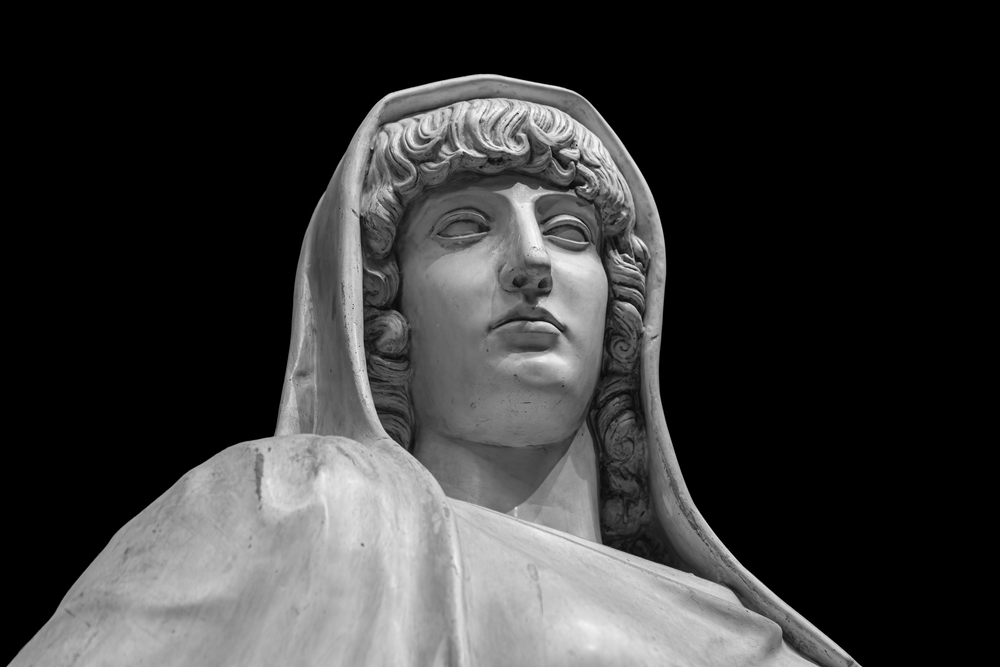
Powers
Vesta is the goddess of the hearth, home, and family. She is central to the domestic sphere, symbolising warmth, stability, and continuity. Vesta's presence in the home was believed to ensure the family's well-being and prosperity. Her sacred fire, maintained in her temple, represented the eternal flame of Rome, reflecting the city's enduring strength and unity.
Symbol
Vesta is symbolised by the sacred fire that burned in her temple. This fire, tended by the Vestal Virgins, was a perpetual flame that symbolised the continuity of the Roman state. The hearth, another of her symbols, represents the centre of the home and family life, emphasising her role as a guardian of domestic harmony.
Worship and Influence
The Vestal Virgins, priestesses dedicated to Vesta, played a role in maintaining her sacred fire. Their purity and dedication ensured the fire never went out, symbolising Rome's eternal strength. The festival of Vestalia, held in June, honoured Vesta with various rituals that emphasised the importance of the hearth and home in Roman life.
11. Mercury: The Messenger of the Gods
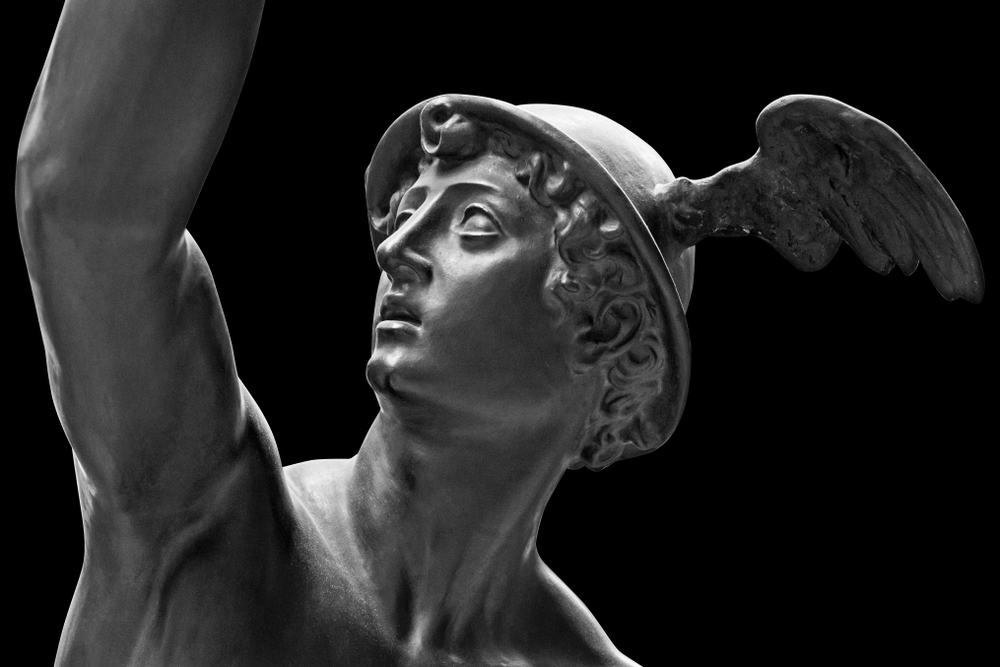
Powers
Mercury is the Roman god of commerce, communication, and travellers, paralleling the Greek god Hermes. As the messenger of the gods, he facilitates communication between the divine and mortal worlds. Mercury's powers also encompass trade and economic transactions, making him a patron of merchants. Additionally, he is the protector of travellers and is invoked for safe journeys.
Symbol
Mercury is often depicted with winged sandals and a caduceus, a staff entwined with two snakes. The winged sandals symbolise his swiftness and ability to move freely between worlds. The caduceus represents commerce and negotiation, reflecting his role in facilitating trade and communication. Mercury's symbols highlight his versatility and essential functions in Roman society.
Worship and Influence
Mercury was worshipped by merchants and travellers who sought his favour for successful ventures and safe travels. His temple on the Aventine Hill was a centre for commercial activity and worship. Festivals such as the Mercuralia, celebrated on May 15th, honoured Mercury with rituals aimed at ensuring prosperity and protection in trade and travel.
12. Ceres: The Goddess of Agriculture
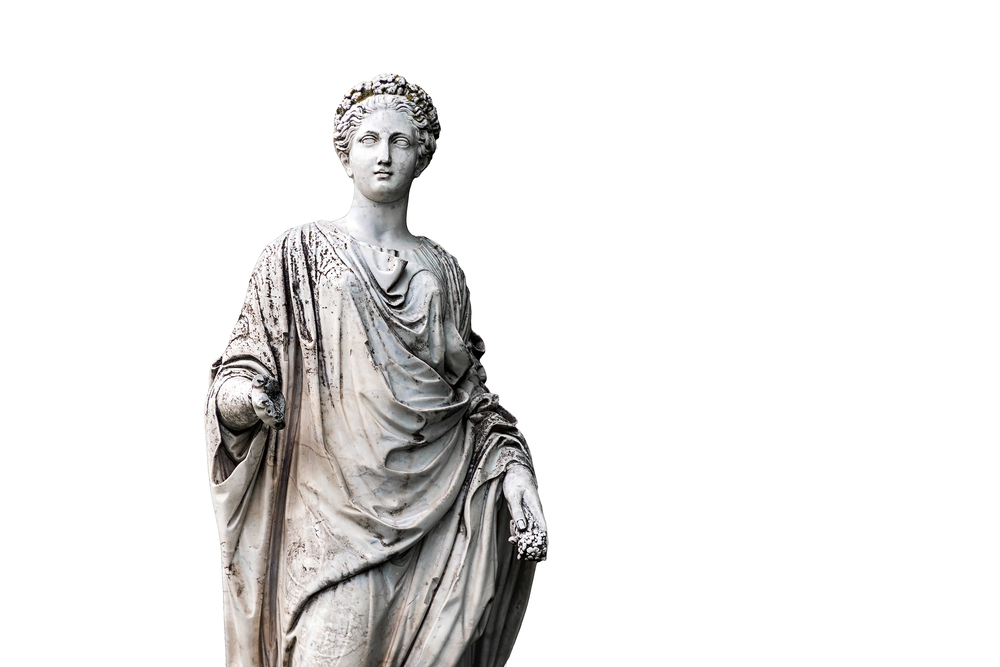
Powers
Ceres is the Roman goddess of agriculture, grain, and fertility, similar to the Greek goddess Demeter. She oversees the growth and harvest of crops, making her essential to the sustenance and survival of Roman society. Ceres's powers extend to the fertility of the land, ensuring that the earth yields abundant food to support the population.
Symbol
Ceres is often depicted with sheaves of wheat or a cornucopia, symbols of abundance and nourishment. These symbols represent her role in providing food and fertility. The sickle, another of her symbols, signifies the harvest and the cyclical nature of agriculture. Ceres's imagery highlights her essential contribution to Roman life.
Worship and Influence
The Cerealia festival, held in April, celebrated Ceres with various rituals, including games and theatrical performances. These festivities honoured her role in ensuring a bountiful harvest and the fertility of the land. Temples dedicated to Ceres served as centres for agricultural worship, where Romans would pray for successful crops and give thanks for the earth's bounty.
Roman Mythology and Its Legacy
The mythology of ancient Rome has left a lasting legacy on Western culture. Many of the gods and their stories were adapted from Greek mythology, but they were given uniquely Roman characteristics. The influence of these myths can still be seen today in literature, art, and modern religious practices.
Frequently Asked Questions About Roman Gods
Are Roman gods the same as Greek gods?
While many Roman gods have Greek counterparts, they are not exactly the same. The Romans adopted and adapted many Greek deities, giving them Latin names and often integrating them into Roman culture and religion with unique characteristics and stories.
How many Roman gods are there?
There are many Roman gods, ranging from major deities to minor spirits. The primary pantheon includes the twelve major gods, but Roman mythology encompasses a vast array of gods and goddesses, each with specific roles and domains.
Who is the strongest Roman god?
Jupiter is considered the strongest and most powerful Roman god. As the king of the gods, he rules over the heavens and earth, wielding the power of thunder and lightning.
Who is the Roman god of death?
The Roman god of death is Pluto, also known as Dis Pater. He rules the underworld and oversees the afterlife, ensuring that the souls of the deceased reach their final resting place.
Who is the Roman god of love?
The Roman goddess of love is Venus. She embodies beauty, love, and fertility, influencing both romantic and physical aspects of love among gods and humans alike.
Who is the oldest Roman god?
Janus is considered one of the oldest Roman gods. He is the god of beginnings, transitions, and doorways, often depicted with two faces looking in opposite directions, symbolising the past and the future.
What did the Romans believe in?
The Romans believed in a pantheon of gods and goddesses who controlled various aspects of the natural world and human life. They practised rituals and offered sacrifices to gain the favour of these deities, ensuring prosperity, protection, and success in their endeavours.
What is the significance of household gods in Roman religion?
Household gods, such as Lares and Penates, were highly significant in Roman religion. They protected the home and family, ensuring the well-being and prosperity of the household. These gods were honoured with daily rituals and offerings.
How did Roman mythology influence modern culture?
Roman mythology has greatly influenced modern culture, contributing to literature, art, and even modern religious practices. Many Western traditions, expressions, and symbols have roots in Roman myths and the deities' stories.
Study Roman Mythology With Centre of Excellence
If you're fascinated by Roman mythology and want to learn more about ancient Rome, we offer a fascinating Roman Mythology Diploma Course, covering Roman history, culture, and society. For a limited time, you can enrol in this course for just £29, saving you over £100!












